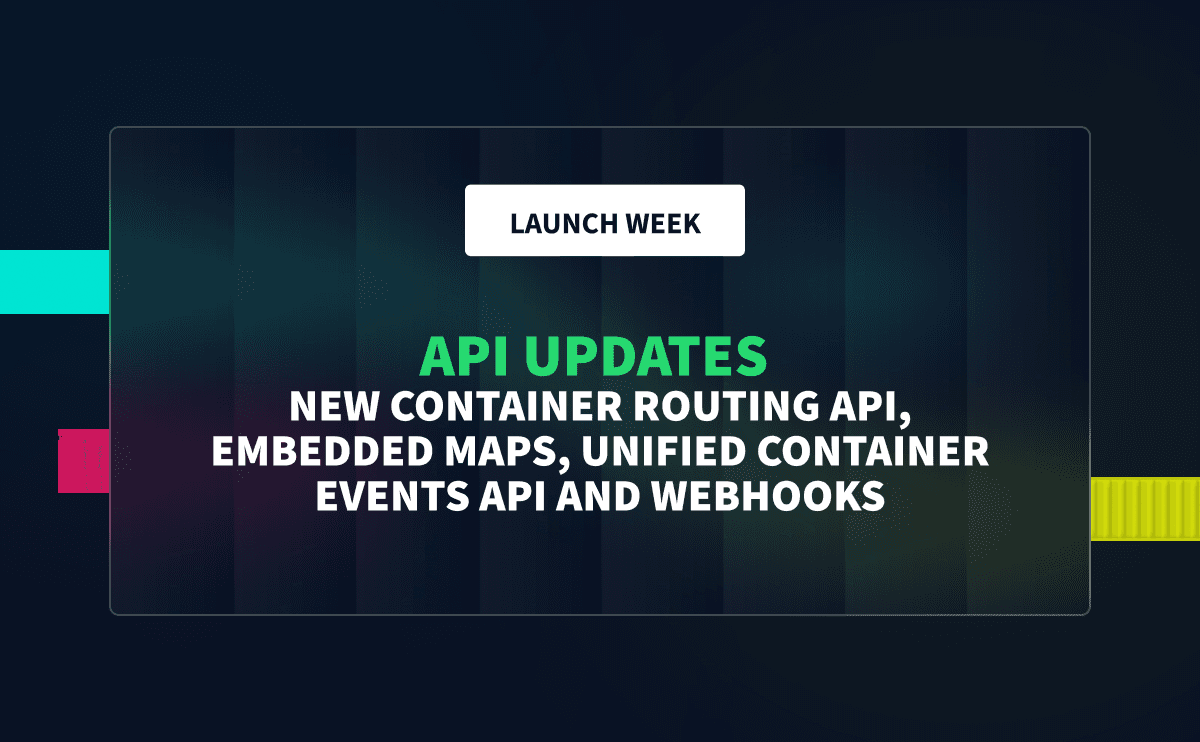Today, we’re thrilled to announce our $6.5m Series A led by Stage 2 Capital, co-led by Grand Venture Partners, and with participation from existing investors. The term ‘milestone’ has a specific meaning in our industry, but for the Terminal49 team, securing our Series A is a significant company milestone that puts us one step closer to advancing our mission of automating global trade.
“We are excited to support Akshay and Terminal49 on their journey to automate global trade. They have built a product that customers value, and that hundreds of organizations rely on to manage ever-increasing complexity and costs within their global supply chains. They have a tremendous opportunity to accelerate and expand into exciting new territories to make an even bigger impact.” - Dan Heck, Board Member and Partner at Stage 2 Capital.
Terminal49 began by operating our own drayage trucking company out of a trailer in the Port of Oakland, where we moved thousands of containers for our customers. The software we built eliminated the manual container tracking that truckers, importers, and brokers were forced to do in order to run their operations. We reduced costs like demurrage and per-diem charges by improving the overall container delivery process thanks to automated container tracking and faster collaboration.
In 2020, we decided to double down on the container tracking software and released our ocean freight visibility dashboard and API. Ocean freight data isn’t standardized, but we standardize it for our customers - we’ve built tight integrations with carriers and terminals, consolidating the data and making it more accessible for those who depend on it, however they want to use it.
Automating Container Tracking
It’s incredibly tedious and cumbersome to keep track of shipping containers and coordinate all the steps in a container's journey. Everyone involved in the supply chain - suppliers, cargo owners, customs brokers, freight forwarders, trucking companies - relies on often-outdated milestone updates that they seek across dozens of steamship lines and terminal websites. These updates are then entered manually in spreadsheets and relayed to partners, customers, and coworkers for handoffs and coordination. Human dependency means this process is prone to human error. These errors can cause thousands of dollars in fees - demurrage, per diem, etc. - and can be detrimental to a company’s reputation.

This is where we can help. Terminal49 automates all container tracking and provides instant access to up-to-date container statuses, helping companies more quickly identify containers at risk and make cost-saving decisions faster. Customers can view all milestones in a shipment's journey, from the empty container at the point of origin all the way to the empty container returned at the destination. All information is pulled directly from the steamship lines and terminals, standardized and formatted nearly for easy consumption. This data is available through their Terminal49 dashboard, or they can leverage our API to push container data into their own system of record.
“Terminal49 has made our team more efficient and productive,” says Spencer Strader, co-founder and CEO of Trade XCelerators. “We now have access to accurate ocean freight information in one place, which lets us proactively share reliable information with our customers and vendors. Terminal49’s automation has saved us thousands of dollars a year, but more importantly it’s helped improve customer trust.”

Today, Terminal49 is tracking over a million containers per year for hundreds of customers worldwide. Customers rely on Terminal49’s dashboard and API data to track, manage, and optimize ocean freight operations. Our customers consistently tell us that since adopting Terminal49, they’ve improved process efficiencies, eliminated hundreds of hours of manual work, and saved thousands in demurrage fees.
“Terminal49 allows us to stay on top of the ever-changing schedules for all vessels we use to ship our customers' cargo,” says Armin Frey, Director of IT at Jaguar Freight, which tracks about 5,000 shipping containers each year. “We’ve reduced manual shipment tracking by 90%, which saves us about 20 hours a month per person. That time can now be spent on high-value projects for our customers.”
Looking back on 2022
While supply chain congestion began easing in the latter part of the year, port congestion still remains much higher than pre-COVID levels. Ever-increasing inflation rates sent the cost of goods and transportation soaring higher than they’ve been in years. Concerns of an impending recession put most freight operators and logistics companies on the offensive, scrambling to reduce costs where they could while still trying to manage the complexities of tracking and scheduling containers.
The best way for us to support our customers dealing with economic uncertainty and global trade complexities was to continue to prioritize data quality. We hold ourselves to high standards and measure our data quality across three vectors:
- Completeness. We provide comprehensive coverage of milestones directly from 100+ shipping lines and terminals. We cover 98% of all global container traffic.
- Accuracy. We’re continuously improving and filtering out inaccurate and incomplete data.
- Latency: We provide container events as quickly as possible. Terminal data is available in near-real time and ocean carrier data updates multiple times per day.
We’ve been busy building functionality to improve ocean freight visibility, while efficiently scaling the company to support our growing customer base. Some recent highlights include:
- Southampton and London Gateway added as our first EU terminals
- Three new shipping line integrations in Q4 - Transfar, SeaLead and T.S. Lines
- Rapid customer growth
- Hiring several new team members
Looking forward to 2023 and beyond
At Terminal49, we’re on a mission to automate global trade. Our recent raise helps us accelerate our efforts and hire the best talent in order to do so - take a look at our open roles and please share them with your network.
We’re so excited for what’s ahead, and in many ways we feel like we’re just getting started 🚀





